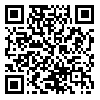Volume 3, Issue 4 (12-2012)
jdc 2012, 3(4): 179-186 |
Back to browse issues page
Download citation:
BibTeX | RIS | EndNote | Medlars | ProCite | Reference Manager | RefWorks
Send citation to:



BibTeX | RIS | EndNote | Medlars | ProCite | Reference Manager | RefWorks
Send citation to:
Herizchi Qadim H, Babaei Nejad S, Rahnama B, Gojazadeh M, Sheykhnavasi M. Efficacy of 0.05% isotretinoin gel in comparison with clindamycin 1% solution in the treatment of papulopustular acne: A randomized clinical trial. jdc 2012; 3 (4) :179-186
URL: http://jdc.tums.ac.ir/article-1-5013-en.html
URL: http://jdc.tums.ac.ir/article-1-5013-en.html
Hamideh Herizchi Qadim * 
 1, Shahla Babaei Nejad
1, Shahla Babaei Nejad 
 , Badrolsadat Rahnama
, Badrolsadat Rahnama 
 , Morteza Gojazadeh
, Morteza Gojazadeh 
 , Masood Sheykhnavasi
, Masood Sheykhnavasi 


 1, Shahla Babaei Nejad
1, Shahla Babaei Nejad 
 , Badrolsadat Rahnama
, Badrolsadat Rahnama 
 , Morteza Gojazadeh
, Morteza Gojazadeh 
 , Masood Sheykhnavasi
, Masood Sheykhnavasi 

1- , drherizchi@yahoo.com
Abstract: (68407 Views)
Background and Aim: Acne vulgaris is a common disorder of adolescence which may lead to significant cosmetic and psychological problems. Different topical and systemic therapeutic modalities have been used to treat acne vulgaris. This study was designed to compare the efficacy of topical 0.05% isotretinoin gel with 1% clindamycin solution in the treatment of acne vulgaris.
Methods: In this randomized clinical trial, 60 patients with mild to moderate papulopustular acne vulgaris were randomly allocated into two groups of equal sizes. One group was treated with 0.05% isotretinoin gel every night. The other group was treated with 1% clindamycin solution twice daily. Both groups were followed every month for 3 months.
Results: The mean of total lesion count decreased significantly after treatment in comparison with its mean before the treatment in both groups (P<0.001). The mean of acne severity index significantly reduced after treatment in both groups (P<0.001). Satisfaction of patients in clindamycin group was higher (P<0.001).
Conclusion: Decrease in total lesion count and acne severity index in both treatment groups were statistically significant however, considering the minimal complications and satisfaction of patients in clindamycin group, 1% solution of clindamycin may be recommended in the treatment of papulopustular of acne vulgaris.
Methods: In this randomized clinical trial, 60 patients with mild to moderate papulopustular acne vulgaris were randomly allocated into two groups of equal sizes. One group was treated with 0.05% isotretinoin gel every night. The other group was treated with 1% clindamycin solution twice daily. Both groups were followed every month for 3 months.
Results: The mean of total lesion count decreased significantly after treatment in comparison with its mean before the treatment in both groups (P<0.001). The mean of acne severity index significantly reduced after treatment in both groups (P<0.001). Satisfaction of patients in clindamycin group was higher (P<0.001).
Conclusion: Decrease in total lesion count and acne severity index in both treatment groups were statistically significant however, considering the minimal complications and satisfaction of patients in clindamycin group, 1% solution of clindamycin may be recommended in the treatment of papulopustular of acne vulgaris.
Type of Study: Research |
Subject:
General
Received: 2012/10/3 | Accepted: 2012/12/3 | Published: 2013/07/7
Received: 2012/10/3 | Accepted: 2012/12/3 | Published: 2013/07/7
Send email to the article author
| Rights and permissions | |
 |
This work is licensed under a Creative Commons Attribution-NonCommercial 4.0 International License. |



